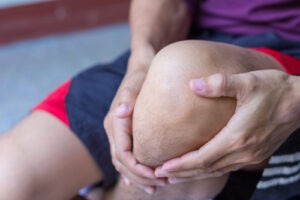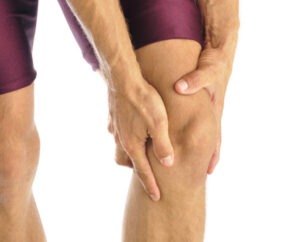 Frozen shoulder, also called adhesive capsulitis, is a painful condition where the shoulder gradually becomes stiff, restricted, and difficult to move. It often develops slowly, worsens over several months, and then eventually improves. Although it is common, it can significantly disrupt daily activities, sleep, and overall quality of life. At T&P Orthopedics and Sports Medicine, our specialists diagnose frozen shoulder early and provide effective treatment options to restore movement and reduce pain.
Frozen shoulder, also called adhesive capsulitis, is a painful condition where the shoulder gradually becomes stiff, restricted, and difficult to move. It often develops slowly, worsens over several months, and then eventually improves. Although it is common, it can significantly disrupt daily activities, sleep, and overall quality of life. At T&P Orthopedics and Sports Medicine, our specialists diagnose frozen shoulder early and provide effective treatment options to restore movement and reduce pain.
What Is Frozen Shoulder?
Frozen shoulder occurs when the connective tissue surrounding the shoulder joint becomes inflamed and thickened. This tissue forms the shoulder capsule, which helps stabilize the joint. As the capsule tightens and stiffens, there is less room for the shoulder to move. This restriction leads to progressive pain, stiffness, and difficulty with basic activities such as reaching overhead, putting on clothing, or lifting objects.
Why Frozen Shoulder Happens
There is no single cause of frozen shoulder, but several factors increase the likelihood of developing it.
After Injury or Surgery
If the shoulder is immobilized after an injury or surgical procedure, lack of movement can cause the capsule to tighten and stiffen.
Diabetes and Other Medical Conditions
Frozen shoulder is more common in people with diabetes, thyroid disease, or metabolic disorders. These conditions may affect inflammation and healing.
Autoimmune or Inflammatory Response
Some cases may be linked to an exaggerated inflammatory response that causes the body to produce excess scar-like tissue around the shoulder.
Age and Gender
Frozen shoulder most often affects adults between ages 40 and 60 and is more common in women.
Common Symptoms of Frozen Shoulder
Patients typically experience symptoms in three phases:
Freezing Phase
Pain increases gradually, especially at night. Shoulder movement becomes more limited.
Frozen Phase
Pain may improve, but stiffness becomes severe. Daily tasks feel difficult.
Thawing Phase
Range of motion begins to return slowly as the capsule loosens.
The entire process can take months to over a year without treatment.
How Frozen Shoulder Is Diagnosed
Diagnosis involves a physical exam to assess range of motion and pain patterns. X-rays, ultrasound, or MRI may be used to rule out other shoulder problems, such as rotator cuff tears or arthritis. Identifying frozen shoulder early leads to more effective and faster treatment.
What Helps Frozen Shoulder Improve
Treatment focuses on reducing pain, improving range of motion, and restoring shoulder function.
Physical Therapy
Stretching, mobility exercises, and targeted strengthening help gently restore shoulder movement. This is the most important part of recovery.
Anti-inflammatory Medications
These help control pain and reduce inflammation during the early stages.
Corticosteroid Injections
Steroid injections can significantly reduce pain and improve mobility, allowing physical therapy to be more effective.
Hydrodilatation
This treatment involves injecting fluid into the joint capsule to stretch and loosen it from the inside.
Minimally Invasive Surgery
For severe cases that do not improve, arthroscopic capsular release can loosen the stiffened tissue and restore mobility.
Recovering From Frozen Shoulder
Recovery takes time, but most patients regain near-normal function with proper treatment. Consistency with physical therapy and early intervention make a significant difference.
If you are experiencing shoulder stiffness that is limiting your daily life, T&P Orthopedics and Sports Medicine can help you find relief and regain full function.
Contact Surgeons Dr. Thomas and Dr. Pennington at the Knee and Shoulder Institute in Las Vegas, NV to Schedule an Appointment:
If you would like to schedule an appointment or learn more about the Knee and Shoulder Institute procedures & treatments,contact the office today click here.
Serving patients from and around greater Las Vegas, Lake Havasu, Bullhead City, Mesquite, Pahrump, Nevada



 An ACL tear is one of the most common and significant knee injuries, especially among athletes and active individuals. The
An ACL tear is one of the most common and significant knee injuries, especially among athletes and active individuals. The  An
An  Arthroscopy is one of the most common orthopedic procedures performed today. This minimally invasive technique allows surgeons to see inside a joint using a small camera and specialized instruments, making it possible to diagnose and treat many conditions with less trauma than open surgery. But while
Arthroscopy is one of the most common orthopedic procedures performed today. This minimally invasive technique allows surgeons to see inside a joint using a small camera and specialized instruments, making it possible to diagnose and treat many conditions with less trauma than open surgery. But while 
 If
If 